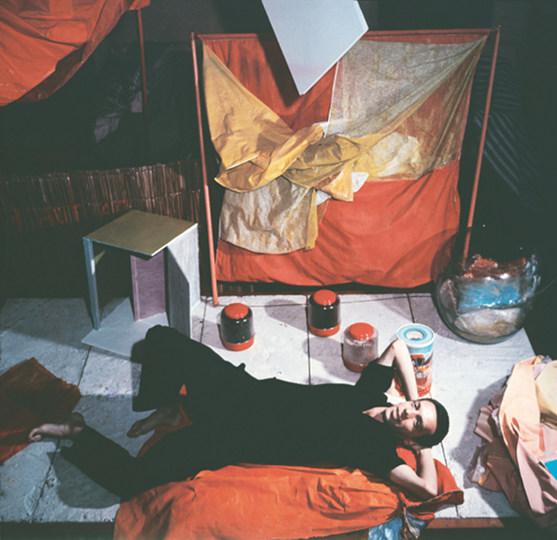Hélio Oiticica: The Great Labyrinth
MMK Museum für Moderne Kunst, Domstraße 10’60311, Frankfurt am Main
28 September-12 Decemer 2013
From the Press Release
This comprehensive retrospective on the Brazilian artist Hélio Oiticica (1937’1980) encompasses works from all phases of his oeuvre.
Throughout his career, Oiticica was filled with a constant urge for renewal and experiment. The active inclusion and involvement of the viewer were fundamental to his oeuvre, with which’like Joseph Beuys in Germany in the same period’he strove to depart from the traditional conception of the artwork. Oiticica was ahead of his time, farther ahead than virtually any other artist of his generation. It would be many years before the terms “participation,” “environment” and “proposition” would come to dominate artistic discourse in Europe and North America; Oiticica already formulated them at an early stage in his career, and to this day they lend his oeuvre key significance.
In the 1950s, Oiticica’who had started out as a painter’was driven by the conviction that color and form should emancipate themselves from the surface. Within the circle of the Grupo Frente in Rio de Janeiro, he developed ideas about a kind of neo-concrete art that would turn away from the schematic forms of abstraction, which in his view had come to a standstill. His oeuvre ranges from early abstract painting to reliefs floating freely in space, the Relevos Espaciais and Bilaterals, and labyrinth-like rooms. This development went hand in hand with Oiticica’s deliberations on how the relationship between the work and beholder could be changed. In his large-scale installations, the so-called Penetráveis (from the Portuguese penetrar’penetrate), he began integrating the viewer as an elementary part of the art experience. Immersion, engulfment, and dissolution in color, space, time, society, music, and delirium took on key significance in Oiticica’s creative work. In 1964 he went a step further with his Parangolés’textile pieces made of colored layers of cloth and intended for wearing and performing in.
At around the same time, Oiticica took an increasing interest in the organic structures of the Brazilian favelas, the street culture of their inhabitants, Samba, and the role as an outsider, which exerted a fundamental influence on his work and led him to a more comprehensive understanding of the unity of art and life. His most well-known work, Tropicália, a walk-in installation consisting of sand, plants, live parrots, and tent-like dwellings, was inspired by the favelas of Rio de Janeiro. With it, he propagated an open understanding of Brazilian influences on culture and merged them with his fundamental deliberations on the development of art. This room installation gave its name to one of the most important cultural movements in twentieth-century Brazil, which’in addition to the visual arts’found expression above all in music.
The exhibition at the MMK is complemented by three outdoor walk-in sculptures, which are being presented until October 27 at the Palmengarten. This part of the show is the result of cooperation with the Palmengarten of the city of Frankfurt and the masters program “Curatorial Studies - Theorie - Geschichte - Kritik.”
Screening ‘Hélio Oiticica’











